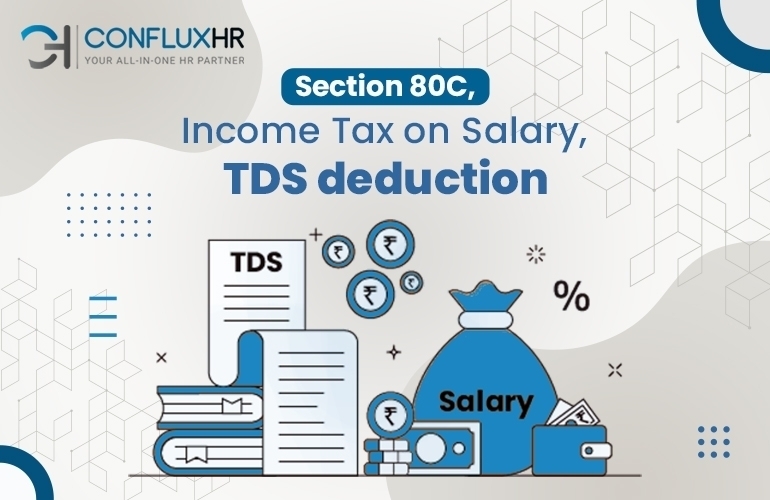Businesses are working hard to complete their income tax filing as the fiscal year ends.
At the beginning of each fiscal year, most firms request investment declarations from their salaried personnel. These investment statements are necessary so that tax deductions can be applied appropriately. The employer will estimate the taxable income based on the investment declaration statement and begin withholding tax in the form of tax deducted at source (TDS) before paying the employee’s monthly salary using TDS management software.
What Exactly is TDS?
In India, the Indian Income Tax Act of 1961 specifies TDS as a method of income tax collection. TDS applies to salaries, commissions, royalties, brokerage fees, contract payments, interest received on various financial investments, lotteries, rental income, professional fees, etc. A component of the Department of Revenue, which is run by the Indian Revenue Service, the TDS is overseen by the Central Board for Direct Taxes (CBDT) (I.R.S.). This sum is collected to ensure the government’s consistent annual income stream. Because of this, tax evasion is prevented.
What Factors are Used for TDS Calculation?
If you’ve ever observed, the C.T.C. (cost to the business) estimate given to you at the time of joining includes items like the base salary, travel expenses, medical expenses, housing rent expenses, and other allowances. Additionally, there are two main categories for salary, namely perquisites. Benefits include services that the employer offers to the employee, such as paying for their travel and fuel costs.
Organizations now use the best TDS software to calculate employee TDS and do many other payroll-related tasks.
How is TDS Determined?
Sections 80C and 80D of the Income Tax Act of 1961 permit deductions for government taxes. This enables a person to search for various investments for a specific fiscal year.
By deducting the exemption from the total annual earnings stated by the Income Tax department, one can compute TDS on salary rate. If an employee requests a tax exemption, the employer must get a declaration and supporting documentation before approving the request.
The following are some possible tax exemption categories.
House Rent Allowance: H.R.A. is a benefit that an employee may claim from their employer if they pay rent for housing.
Conveyance or Travel Payment: If your company gives you this type of allowance, they can declare it for tax purposes.
Medical Allowance: If your employer offers you a medical allowance, they may report it and furnish medical records to qualify for a tax exemption.
The amount excused from taxes up to a certain threshold is constrained.
TDS Deduction
A claim for a refund of the excess amount can be made if a person has paid more in taxes than required. Additionally, TDS deductions for people in different income brackets are computed based on various variables.
TDS Deduction Methods
Salary, lotteries, bank interest, rent, commission payments, and payments to independent contractors are examples of income and expenses that fall under the scope of TDS. As a result, the source deducts a portion of the total payment whenever one of these segments receives payment. The “Deductor” is the source, which can be either a person or an organization. The Deductee is the person from whose payment the deduction is made.
Income Tax Deductions List FY 2022-23 (AY 2023-24):
Section 80C Deduction & Section 80CCD:
The following investments and expenses are eligible for deduction under sections 80C, 80CCC, and 80CCD of the income tax act:
| Section | Eligible Investments/expenses |
| 80C | Contributions made towards- EPF/VPF, PPF, ELSS mutual funds, Sukanya Samriddhi, senior citizens savings scheme, NSC. A 5-year term deposit, life insurance or ULIP premium, home loan principal repayment, stamp duty paid towards house purchase, children’s school tuition fee (maximum two children). |
| 80CCC | Contributions made to any annuity or pension plan of a life insurance company. |
| 80CCD (1) | Both salaried employees and self-employed can claim this deduction on their contribution towards NPS, not more than- 10% of Basic Salary+DA (in case of an employee), 20% of total gross income (for self-employed). |
| 80CCD(1B) | Additional deduction of Rs. 50,000 for the investment done in NPS. Atal Pension Yojana is also eligible. |
| 80CCD (2) | It is available to employees for the employer’s contribution to NPS. The limit for the deduction is lower than- the amount of contribution or 14% of salary (for central government employees)/10% of salary (for other employees). It is available under both old and new income tax regimes. |
The aggregate income tax deduction limit under sections 80C, 80CCC and 80CCD(1) are Rs.1.50 Lakh, and an additional Rs.50,000 is available under section 80CCD(1B).
Why is Filing the Correct Tax Return Necessary?
When calculating your tax liability, you must be truthful about your income and outgoings. When transitioning to a new job, you could overlook some aspects, such as income from the prior position or additional revenue from a contractual opportunity. However, one should refrain because doing so will subject one to severe fines from the relevant tax authorities, who will also take legal action. To prevent issues with the taxman, you must guarantee that your data is accurate and can withstand future cross-verification.
Employee TDS software makes it simple to cross-check and verify their tax returns.
A person must be expected to pay taxes if they receive a salary. However, if the employee deposits the tax, the employer will be responsible for paying interest and a penalty for neglecting to withhold the tax.


